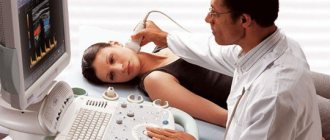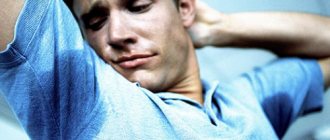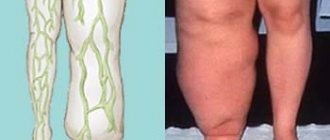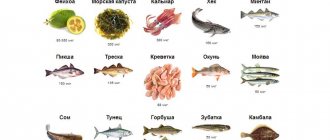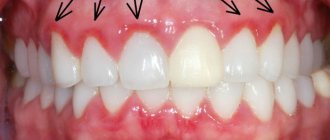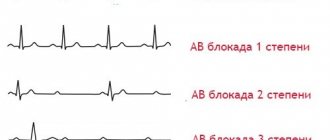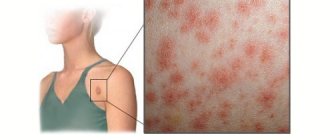Coccydynia: what is it?
Coccydynia includes not only pain in the coccygeal area, but also other symptoms.
The pathological process develops both when the coccyx is damaged and during diseases of the pelvis, rectum, and gynecological diseases. Often the pain affects not only the tailbone, but also radiates to the buttocks, legs, groin area, perineum, rectum, lower abdomen and thighs. Women are more at risk of developing anococcygeus syndrome. The likelihood of stress, falls, injuries, and bruises on the edge of a chair is higher than in men for a number of reasons: high sensitivity to nervous overload, weakness, daily fatigue when caring for a small child, the presence of extra pounds, wearing high heels.
Classification of the disease
Clinicians usually distinguish two forms of the disease, namely:
- primary – characterized by a wide range of damage to the coccyx itself;
- secondary – caused by pathologies of the pelvic organs.
Depending on the location of the pain syndrome, the disease is divided into:
- true coccydynia - the focus of pain is in the coccyx;
- anorectal pain syndrome - pain radiates to the anus, perineum and buttocks;
- Proctalgia – pain affects the rectum.
Reasons for the development of the disease
In most cases, acute pain in the coccyx area appears due to a blow, traumatic injury, fall on the back or tailbone. A characteristic sign of the post-traumatic form of coccydynia in women and men is the appearance of pain some period after the injury. Sometimes the blow is so strong that there is a crack in the bone structures, painful sensations arise, which intensify many times when moving, trying to sit down or stand up.
Find out the instructions for using Ketonal gel to relieve back and spine pain.
The characteristic symptoms and methods of treating intercostal neuralgia with tablets are written on this page.
There are other causes of anococcygeus syndrome:
- urethritis;
- inflammation of hemorrhoidal veins, prolapse of swollen nodes from the rectum;
- prolonged stay in the “sitting” position;
- scar tissue lesions after surgery on the perineum, rectum;
- fracture of the pelvic bones;
- with age, the muscles and ligaments of the perineum lose elasticity;
- inflammatory process with pain in the rectum and adjacent areas;
- bad habit of sitting for a long time in the toilet;
- neuritis, myositis in the pelvic and perineal area;
- persistent constipation. Constant muscle strain, excessive pressure on the area located next to the coccyx, negatively affects the condition of the vertebral structures;
- nervous overstrain for a long period.
Coccydynia ICD code – 10 – M53.3.
Causes
There are many reasons for the development of pain in the coccyx area. The main ones:
- Injuries to the coccyx and sacrum (fall on the buttocks, direct blow to the coccyx, road accident, sports injuries);
- Prolapse of the perineum (complications after childbirth) and other birth injuries (hemorrhage in the tailbone area, dislocations, etc.);
- Scars of the rectum and anal passage (trauma, surgery), as well as other organs and tissues (due to severe inflammation or surgery);
- Damage to the nerves in the pelvic area (neuritis);
- Frequent constipation or diarrhea (long sitting on the toilet);
- Prolonged sitting in an uncomfortable position (“TV disease” - from frequent and prolonged sitting on a solid support with legs pulled up to the stomach with emphasis on the tailbone);
- Prostatitis;
- Haemorrhoids;
- Paraproctitis;
- Frequent stress;
- Rectal fissures;
- Coccygeal fistulas.
Under the influence of one or more causative factors, spasm of the perineal muscles and shortening of the pelvic ligaments occurs. This, in turn, entails pinching of nerve endings, deformation of the sacrococcygeal region of the spine and the occurrence of pain. It is also possible to directly impact nerve bundles with a tumor, hematoma, purulent formations, etc.
Characteristic signs and symptoms
The development of coccydynia dooms a woman to suffering for a long period: anococcygeus syndrome disappears for a long time, gradually, even with timely initiation of treatment and strict adherence to recommendations. The pain can be constant or intermittent, discomfort intensifies after defecation, changing position (sitting/standing), when moving, or climbing stairs.
Other manifestations of coccydynia:
- constipation. Constant pain forces you to reduce the number of bowel movements, which negatively affects the condition of the intestines. Also, a woman moves less, which negatively affects intestinal motility;
- change in gait: the patient tries to choose the right position, walks, waddles to reduce pain when moving;
- depression, mood swings for three months or more against the background of negative symptoms;
- irritable rectal syndrome. Against the background of coccydynia, intestinal disorders appear: soreness, bloating. Negative manifestations are less pronounced after defecation.
Treatment of coccydynia
Treatment of this disease includes both traditional and folk methods of treatment. Traditional ones include:
- treatment with pulsed currents, which affects the rectum
- treatment using ultrasound
- laser treatment
- treatment using therapeutic mud
- paraffin applications
- UHF therapy
Only a doctor can prescribe the treatment that will help you. This requires an examination. Well, if you don’t have the opportunity or desire to go to a doctor, you can try traditional methods of treating coccydynia. Sometimes they turn out to be quite effective and have helped a huge number of people. To be convinced of this, just read the reviews on medical forums.
Treatment of coccydynia with folk remedies
First stage.
You will need to make your own real, homemade apple vinegar. For this you will need:
- 5 kg. apples
- 100 grams of raw yeast or a bag of dry
- 200 grams of rye crackers
- 1 kg. Sahara
- 1 cup real honey
- Grate the apples on a coarse grater, add boiled water and other products described above.
- Place all this in an enamel pan, cover with any cloth and place in any warm place.
- During the day, this entire mass must be mixed with intensity 3-4 times.
- After 10 days, the resulting infusion can be filtered and granulated sugar can be added to it at the rate of 100 grams per 1 liter.
- Then the resulting liquid is poured into glass bottles, covered with gauze and stored in a dark and warm place for a period of 4-6 weeks.
- After this time, the vinegar is ready.
- Store in a cool place, you can put it in the refrigerator.
Second phase.
- Pick nettle leaves, but always together with the inflorescences. Moreover, nettle flowers should make up no more than one fifth of the total volume.
- For example: you have 400 grams of leaves, then you need 100 grams of inflorescences, or a little less.
- Next, fill 2 three-liter glass jars with this mixture, compact it well and fill it with vodka or alcohol previously diluted to the state of vodka.
- The nettle will constantly float to the top, so it needs to be drowned every day.
- After 2 weeks, the raw materials need to be squeezed out and the tincture poured into glass jars or bottles.
Third stage.
- Treatment begins like this. In the morning you need to drink a glass of boiled water with the addition of 1 teaspoon of apple cider vinegar we prepared and 3 teaspoons of honey.
- After 30 minutes, you need to take 1 teaspoon of nettle tincture, previously diluted in 1/3 glass of water.
- Drink this medicine 3 times a day 30 minutes before meals.
The treatment process for coccydynia is very long and can take about a year. So be patient. A few months after you start taking this medicine, the pain should decrease, and it should completely disappear within a year, as I wrote above.
Products to be consumed for coccydynia:
- honey (you need to eat at least half a glass a day, more is possible)
- sea fatty fish (herring or lightly salted anchovy), the fish should not be boiled or fried, but rather salted
- seafood: shrimp, squid, seaweed
- grated horseradish in an amount of at least 1 teaspoon per day
- greens in any form
- juices: apple, carrot, citrus, you can add 1 tbsp to a glass of any juice. a spoonful of red beet or black radish juice.
In old age, as a rule, doctors do not risk performing surgery, since it is considered very difficult, so nothing prevents you from being treated in the manner described.
Don't expect to get rid of this disease quickly and don't give up. Coccydynia is a rather complicated disease and, unfortunately, it will not be cured quickly. On average, it takes 3-4 hours to write 1 article. By sharing an article on social networks, you express gratitude to the blog authors for their work!!!
Diagnostics
The doctor palpates the lower back and tailbone. Increased pain requires differentiation of coccydynia from pathologies of the pelvic organs. It is important to exclude hemorrhoids, bladder tumors, radiculitis, urethritis, proctitis, anal fissure.
With the results, you need to visit a neurologist, gynecologist, vertebrologist or proctologist. During the diagnostic process, the patient passes:
- biochemical plus clinical blood test;
- coprogram (biomaterial - feces);
- Analysis of urine.
Instrumental studies are required:
- colonoscopy;
- conducting a gynecological ultrasound, ultrasound examination of the abdominal organs;
- conducting CT scans and x-rays of the coccygeal area to identify damage to solid structures;
- a test with the injection of a local anesthetic into the coccyx to clarify the type of coccydynia: primary or secondary.
Note! Pain in the tailbone is a sign not only of coccydynia, but also of other diseases. For this reason, a comprehensive examination is required, including finding out the medical history of a particular patient, conducting instrumental studies, and taking tests.
SYMPTOMS OF COCCYDYNAYA (pain in the tailbone)
It would seem that what could be special here?
“Coccix” is Latin for “coccyx,” and “one” means pain.
But pain in the coccyx can be different: constant or periodic, occurring without a provoking factor or in connection with some phenomenon or action, it can be localized only in the coccyx area or spread to another area.
What else is accompanied by coccydynia?
- A change in gait, as the body will tend to avoid those movements that cause pain.
- Intestinal disorders
- Mood instability, depression, which can become a companion to a condition such as coccydynia, which brings discomfort to life and reduces the quality of life with frequent recurrences.
Effective treatments
When coccydynia is detected, a woman must understand that complex therapy awaits: analgesics are not a solution, this is only temporary relief, but not eliminating the root cause. If the problem arose against the background of damage to the coccyx, then pain of greater or lesser intensity often causes discomfort for months; in the absence of competent therapy, one can suffer for years from discomfort in the coccygeal area.
If unpleasant sensations appear as a result of disorders in the rectum or pelvic organs, then the underlying pathology must be cured, and the negative symptoms will gradually disappear. Therapy is carried out by a specialist whose profile allows treating the identified disease: gynecologist, proctologist, urologist. Visits to a vertebrologist – a doctor who treats diseases of the spinal column – are required. If you have a coccyx injury, you need the help of an orthopedic traumatologist.
The main directions of complex therapy of coccydynia in women:
- non-hormonal drugs with anti-inflammatory, active analgesic effects (NSAIDs) - local and systemic drugs;
- antidepressants and tranquilizers, herbal sedatives. The choice of names and groups of drugs depends on the severity of psycho-emotional disorders;
- analgesics to reduce pain. In severe cases, doctors perform injections into the coccyx area and novocaine blockades;
- back massage, sessions with a chiropractor;
- partial or complete restriction of mobility of the affected area during therapy, especially against the background of injury;
- physiotherapy: paraffin baths (in the absence of inflammation), the use of ultrasound, rectal darsonvalization, diadynamic currents, mud therapy, laser therapy;
- refusal to lift weights, limiting physical activity;
- folk remedies. All recipes must be approved by a qualified specialist. To reduce pain and improve tissue nutrition, take sprouted wheat sprouts internally, externally: lavender tincture in vegetable oil, a mixture of honey and apple cider vinegar, an infusion of radish juice and thin honey. It is useful to drink a decoction of rose hips, which contains a lot of microelements and vitamins.
Why does your back hurt in the lumbar region and how to distinguish discomfort from kidney disease? We have the answer!
The rules for performing therapeutic exercises and exercises for osteochondrosis of the cervical-thoracic spine are described on this page.
Follow the link https://vse-o-spine.com/lechenie/medicamenty/plastyr-versatis.html and read the instructions for using the Versatis patch with lidocaine to relieve back pain.
Treatment of the disease
How to treat coccydynia can only be determined by a clinician based on data from laboratory and instrumental diagnostic examinations. Therapy for the disease is aimed not only at relieving pain, but also at eliminating the provoking disease.
Conservative treatment tactics include:
- taking medications;
- physiotherapeutic procedures;
- Exercise therapy - gymnastics for coccydynia is compiled individually for each patient;
- use of traditional medicine recipes.
Drug treatment for this disease is aimed at using:
- NSAIDs – to neutralize mild to moderate pain;
- drug blockades in the nerve plexuses located in the coccyx area;
- psychotropic substances – to improve mood and eliminate depression;
- muscle relaxants and tranquilizers;
- anesthetics.
The most effective physiotherapy procedures are:
- electrotherapy;
- diathermy;
- influence of ultrasonic waves;
- mud therapy;
- laser therapy;
- acupuncture;
- UFO and UHF;
- manual therapy;
- Darsonvalization.
Diathermy
Treatment at home involves ingesting medicinal decoctions and infusions based on:
- rosehip;
- aloe;
- geraniums;
- sea buckthorn.
You can also use rectal suppositories and ointments with an analgesic effect.
Post-traumatic coccydynia is often an indication for surgery. In addition, medical intervention is necessary if conservative methods of therapy are ineffective. In any case, the issue of surgery is decided individually for each patient.
Possible complications
The development of anococcygeus syndrome with characteristic painful sensations exhausts a woman and negatively affects her well-being, mood, and activity. Constant pain or attacks after movement or physical activity interfere with normal life.
Negative consequences often develop:
- chronic constipation;
- urinary disturbance;
- depression, irritation, mental instability;
- decreased muscle tone due to limited physical activity.
What is coccydynia and what does it lead to?
The coccyx contains the unpaired bone and the spinal column - the most important elements for the functioning of the body. When pathological changes begin in this area, you can forget about a comfortable life. Constant pain in the sacrum with coccydynia makes any movement unbearable.
The coccyx is a wedge curved on both sides, the length of which is several times greater than the width. It has adjacent vertebrae - caudal. Each of them can be affected if you do not consult a doctor in time.
- Prolonged headaches with osteochondrosis: how to treat
- Tablets and ointments to relieve pain from osteochondrosis
Pain in the sacrum during coccygodania occurs due to the fact that osteochondrosis most often affects the cervical and lumbar regions.
In case of illness, the distance between the vertebrae is reduced, the discs are compressed, pinching the nerve endings and blood vessels. Treatment is aimed at avoiding excessive convergence of the ridge elements.
Prevention measures
Anococcygeus pain syndrome in women is difficult to treat; a complex of medications, physiotherapy, special gymnastics, and massage are required. To prevent painful sensations during the period of illness, doctors recommend monitoring the condition of organs located in the pelvic area and avoiding injuries, bruises, and falls.
Additional recommendations for the prevention of coccydynia in women:
- timely treatment of gynecological diseases, hemorrhoids, radiculopathy, tumor processes;
- refusal to lift weights whose weight exceeds the permissible limits for women;
- When working sedentarily, it is necessary to avoid excessive overload of the lumbosacral area and coccyx: use soft and springy chairs, special pillows for the pelvic area, and get up more often to warm up.
The development of coccydynia negatively affects a woman’s lifestyle and activity. It is important to study preventive measures, protect the tailbone from impacts, do not sit for a long time without moving, but also do not overload the spine. If pain appears in the lower back and coccygeal area, you need to visit a vertebrologist, be examined by a proctologist, gynecologist and urologist. Only competent complex therapy stops damage to bone structures, eliminates the cause of pain when the underlying pathology is identified.
Learn more about what coccydynia is and how to treat the disease after watching the following video:
Characteristic symptoms
The main symptoms of coccydynia include pain in the coccyx area during prolonged sitting (especially when sitting on a hard surface), which worsens when the patient stands up. Painful sensations can also occur or intensify during defecation, sexual intercourse, menstruation, physical activity, pressure on the tailbone, and there is no connection with weather changes or diseases of the genitourinary system.
With coccydynia, which has developed due to injuries to the coccyx, pain can suddenly arise and stop, intensify and weaken depending on the position of the body.
In addition to pain, patients complain of numbness in the lower back, spasm of the perineal muscles, stiffness of the lower extremities, changes in gait due to worsening pain during certain movements (slow, somewhat waddling, so-called duck gait). Coccydynia is often accompanied by mood swings and depression.
Coccydynia causes very characteristic symptoms. The main ones include the following:
- Pain in the coccyx area. Typically, discomfort is also felt in the area of the buttocks, genitals, anus, and sacrum. The pain is aching in nature and often occurs in the form of attacks. But some people feel discomfort all the time. Pain may increase with bowel movements, sitting, or sudden standing up.
- Excessive sweating.
- Feeling of heaviness in the coccyx area.
- Pale skin during attacks.
- Limiting physical activity.
- Increased pain upon palpation.
- Depressive state.
- Gait disturbance.
Coccydynia provokes the development of functional disorders of internal organs - first of the small pelvis, and then of the abdominal cavity.
Urological problems and rectal dyskinesia usually develop. In addition to these diseases, autonomic disorders are often observed, which manifest themselves in the form of rapid heartbeat, shortness of breath, dizziness, and arterial dystonia. It is also worth considering that this disease is characterized by seasonal relapses.
Diseases of the musculoskeletal system, which includes the spine, significantly reduce the patient’s level of comfort. With coccydynia, a forced change in gait is observed, the tailbone hurts, and this does not allow one to take the usual position when sitting; the person tries to lean a little forward, thereby unloading the affected segment.
Patients' complaints about pain are specific, some experience constant pain, others talk about periodic, sharp, shooting, aching, burning pain. Pain can occur after exercise, without it, depending on the time of day and body position.
Women often become depressed; disorders and problems with the sexual functions of patients play an important role in the development of depressive states. Another factor is problems with defecation due to pain in the coccygeal segment of the spine; constipation is provoked by the fear of going to the toilet, as this is associated with an exacerbation of pain. The absence of stool for 2-3 days, becoming regular (chronic), leads to intoxication of the body and a deterioration in overall health.
On the part of the autonomic nervous system, there are disruptions in the functioning of the cardiovascular system, increased blood pressure, dizziness, and increased activity of the sweat glands.





